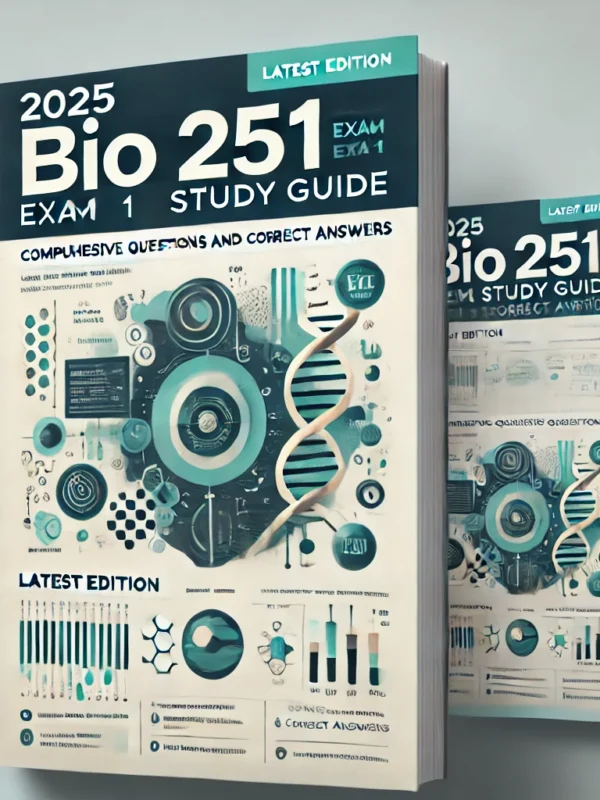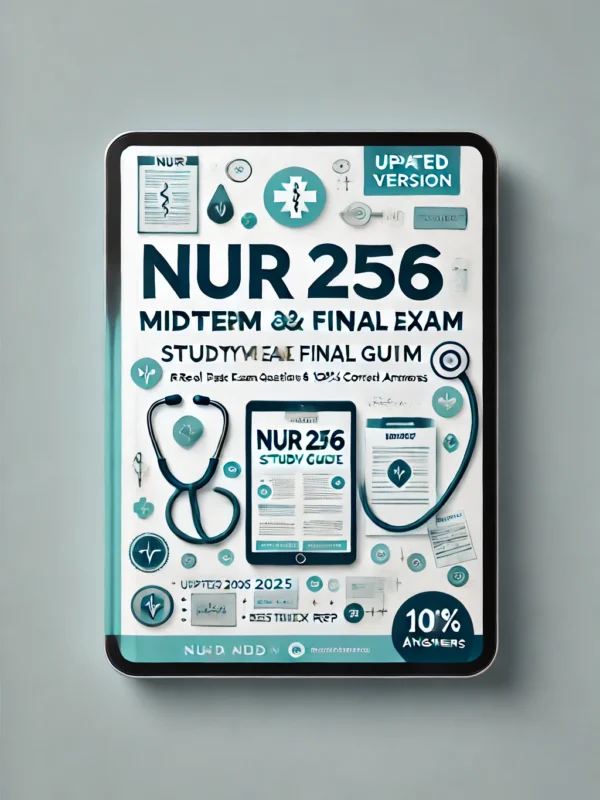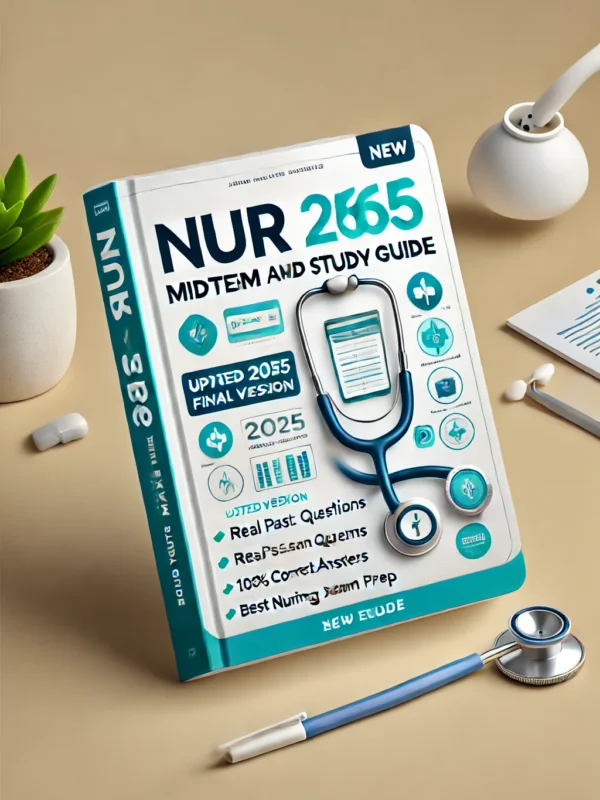Ace your chemistry final with the Ultimate Chemistry Final Exam Study Guide, packed with expert-verified questions and answers to ensure guaranteed success. This guide is tailored for students preparing for their chemistry finals, covering critical topics like atomic structure, chemical bonding, stoichiometry, and reaction kinetics. Each question mirrors real exam formats, with detailed, expert-verified answers that clarify complex concepts and boost your confidence. Whether you’re revising core principles or tackling advanced topics, this study guide is your essential companion for mastering chemistry and excelling in your final exam.
Preview
Question 1
Which of the following is a chemical change?
A) Condensation of steam
B) Burning of gasoline
C) Dissolving sugar in water
D) Melting of gold
Correct Answer: B) Burning of gasoline
Rationale: Burning of gasoline involves combustion, a chemical reaction that produces
new substances such as carbon dioxide and water. The other choices represent physical
changes where the substance retains its identity.
Exact vs. Measured with Uncertainty
Question 2
Which of the following measurements is exact?
A) The number of grams in your weight
B) The number of seconds in an hour
C) The volume of water you drink in a day
D) The distance from San Francisco to Kansas City
Correct Answer: B) The number of seconds in an hour
Rationale: Time is based on a defined system, making the number of seconds in an hour
(3600) an exact value. Other measurements involve some level of estimation or
uncertainty.
Significant Figures
Question 3
How many significant figures are in the measurement 0.88400 s?
A) 3
B) 4
C) 5
D) 6
Correct Answer: C) 5
Rationale: Leading zeros do not count, but trailing zeros in a decimal do. Thus, 0.88400 has
f
ive significant figures: 8, 8, 4, 0, and 0.
Unit Conversion – Area Calculation
Question 4
What is the area of an 8.5 × 11-inch sheet of paper in cm²?
A) 6.0 × 10² cm²
B) 9.35 × 10² cm²
C) 4.5 × 10² cm²
D) 1.2 × 10³ cm²
Correct Answer: A) 6.0 × 10² cm²
Rationale: Converting inches to cm (1 inch = 2.54 cm), the area is calculated as:
(8.5 × 2.54) × (11 × 2.54) ≈ 603 cm², which rounds to 6.0 × 10² cm².
Which of the following is a chemical change?
A) Condensation of steam
B) Burning of gasoline
C) Dissolving sugar in water
D) Melting of gold
Correct Answer: B) Burning of gasoline
Rationale: Burning of gasoline involves combustion, a chemical reaction that produces
new substances such as carbon dioxide and water. The other choices represent physical
changes where the substance retains its identity.
Exact vs. Measured with Uncertainty
Question 2
Which of the following measurements is exact?
A) The number of grams in your weight
B) The number of seconds in an hour
C) The volume of water you drink in a day
D) The distance from San Francisco to Kansas City
Correct Answer: B) The number of seconds in an hour
Rationale: Time is based on a defined system, making the number of seconds in an hour
(3600) an exact value. Other measurements involve some level of estimation or
uncertainty.
Significant Figures
Question 3
How many significant figures are in the measurement 0.88400 s?
A) 3
B) 4
C) 5
D) 6
Correct Answer: C) 5
Rationale: Leading zeros do not count, but trailing zeros in a decimal do. Thus, 0.88400 has
f
ive significant figures: 8, 8, 4, 0, and 0.
Unit Conversion – Area Calculation
Question 4
What is the area of an 8.5 × 11-inch sheet of paper in cm²?
A) 6.0 × 10² cm²
B) 9.35 × 10² cm²
C) 4.5 × 10² cm²
D) 1.2 × 10³ cm²
Correct Answer: A) 6.0 × 10² cm²
Rationale: Converting inches to cm (1 inch = 2.54 cm), the area is calculated as:
(8.5 × 2.54) × (11 × 2.54) ≈ 603 cm², which rounds to 6.0 × 10² cm².












Reviews
There are no reviews yet.